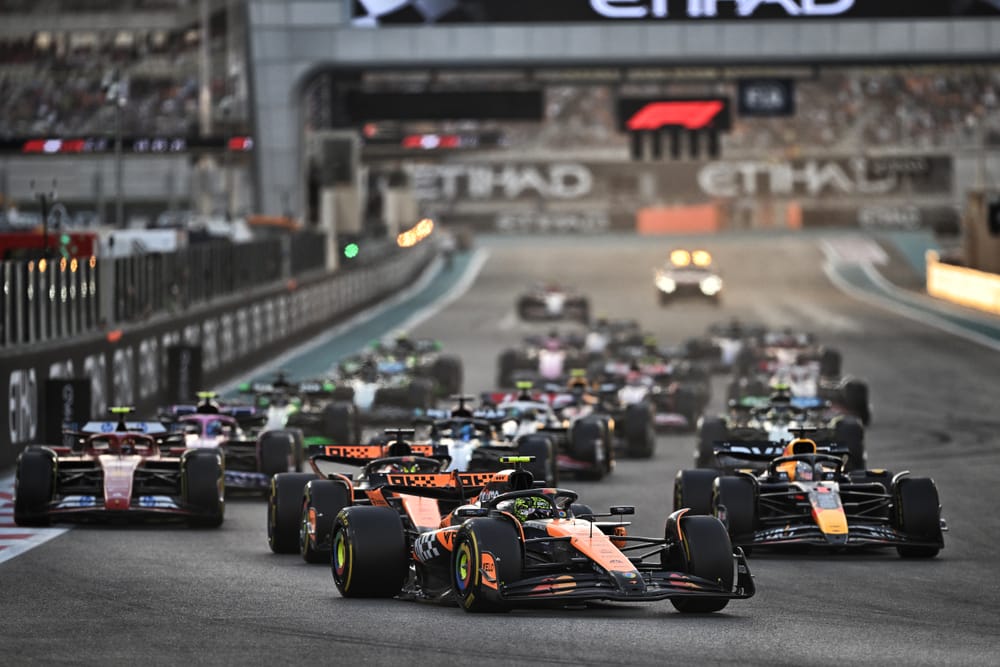Formula 1’s focus on increasing its social media presence has been one of the biggest reasons for the series’ boom under Liberty Media – and arguably even more important than the Netflix effect.
But the popularity explosion on platforms like X (née Twitter), Facebook, Instagram and Tiktok has not been without its downside - for it has left F1 exposed to some adverse consequences, too.
Chief among these is the toxic behaviour of some fans – with a prevalence of negativity, harassment and discrimination often dominating the conversation.
A growth in fan tribalism, which especially gets stirred up amid a close F1 title battle or controversial moments on track, has been a further catalyst in driving many fans away from some social media platforms.
Twitter used to be fun. But this X thing is not. Toxic people create their own toxic environments. They know no other. The non-toxic people have no option but to leave. This increases the concentration of toxicity until it becomes caustic. And we know what happens next. #X #f1
— Damon Hill (@HillF1) November 24, 2024
Concerns about a toxic fanbase have even been expressed by drivers, with world champion Max Verstappen pointing out on Red Bull’s Talking Bull podcast last year that he was not impressed by a lot of what he saw.
"People always make it really a lot worse on social media,” he said. “There are a lot of idiots on that platform that always have something to say, something to complain about.
"There are a lot of positive people, but also some proper idiots. I think it's better just to ignore all of that.”
But the issue runs much deeper than it just being about annoyance. With personal attacks and threats made to race officials, competitors and media, there are increasing concerns that things have gone too far.
We can't forget that Nicholas Latifi faced death threats on social media over what happened at the 2021 Abu Dhabi Grand Prix, and even had to hire bodyguards in the weeks after.
What the data says
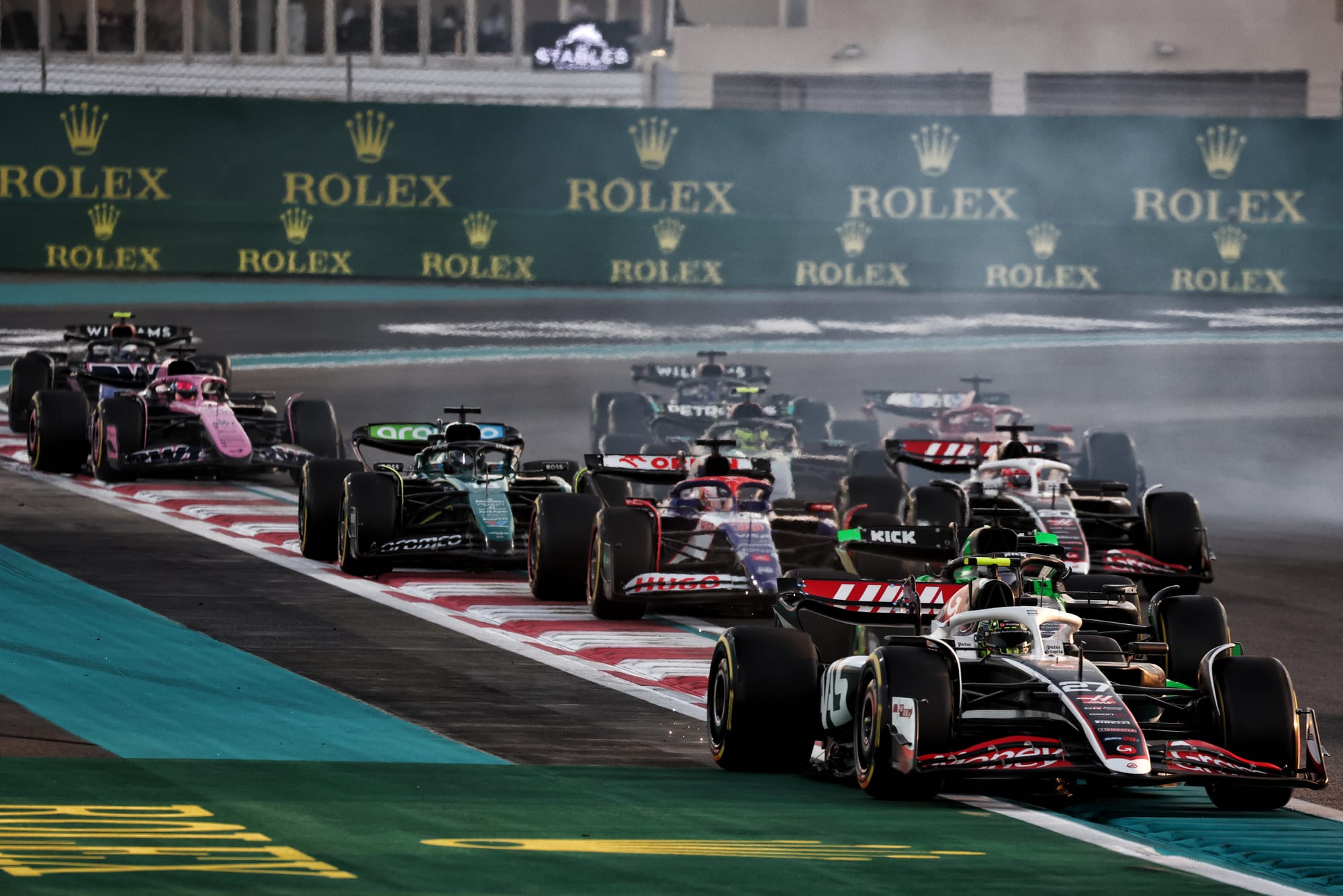
Up until now it has been hard to get a proper understanding of the true scale of the problem of toxicity in F1, but a new report published today by social intelligence company Buzz Radar has put some meat on the bones.
In the latest of its reports on F1, Buzz Radar has used both AI and human analysis to monitor 100 million F1 social media posts across 247,000 fan accounts over the past 10 years, to analyse the scale of toxicity among fans.
Defining toxic posts as holding one of seven traits – discrimination, targeted harassment, what it defines as 'general negativity', tribal hostility, reactive aggression, gatekeeping and malicious narrative – the company has charted how the conversation among fans has evolved since 2016.
As the below graph shows, there have been some notable trends over that time which have come in two phases.
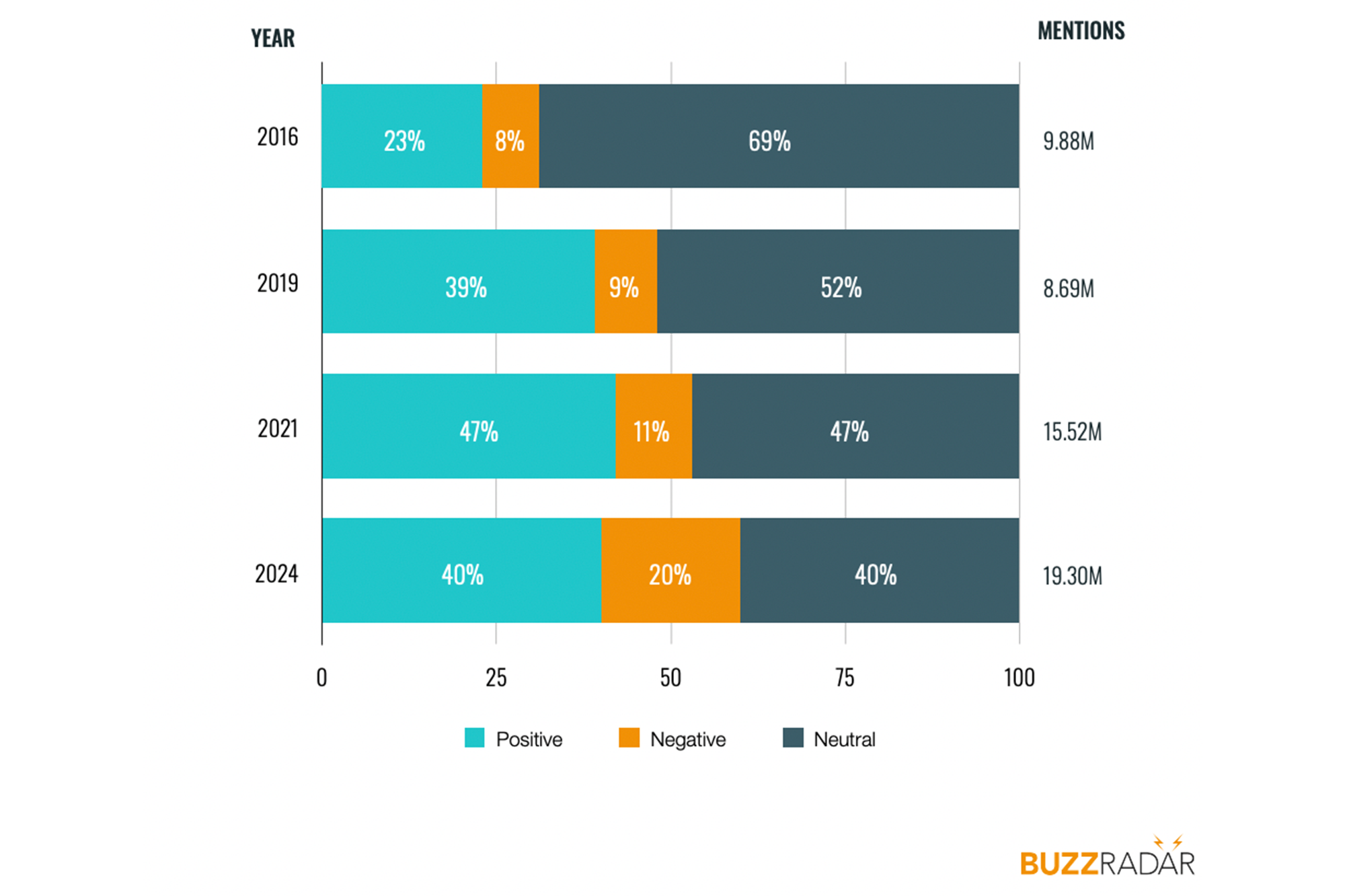
From 2016 to 2019, the growth seemed to mainly revolve around more positive conversations where fans were upbeat about F1 – with that shift going from 23% of posts to 39%.
That baseline of positivity has stayed quite stable since – with a spike in 2021.
But what has shifted a lot is the growth of toxicity. The intense and often controversial title battle between Verstappen and Lewis Hamilton in 2021 witnessed 11% of posts being negative.
However, last year, with another close fight for glory, negativity nearly doubled from three years ago – with the ratio being 20%.
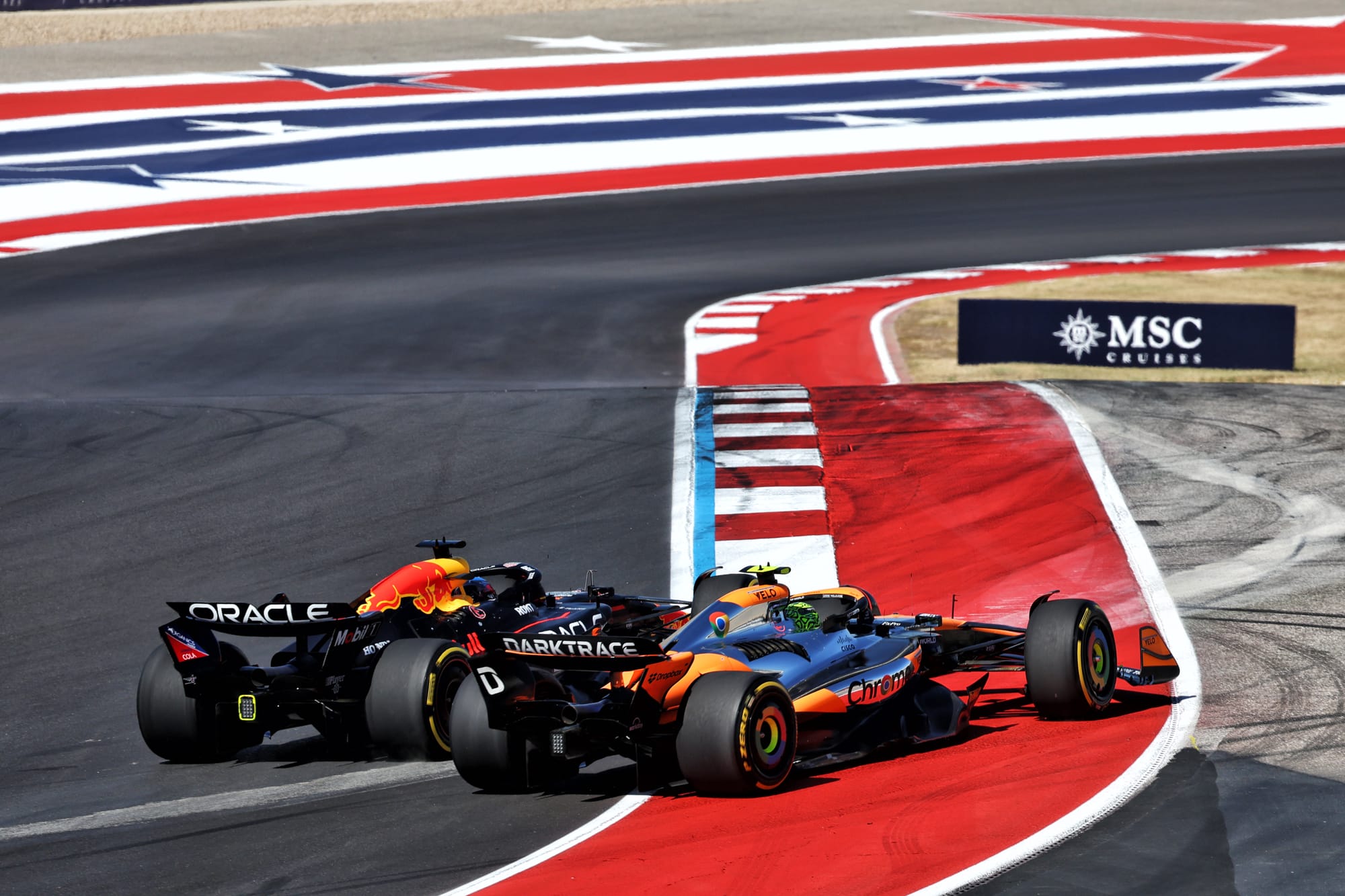
Some of this increase was down to the on-track action, but equally some of it was the result of a start of a campaign where Verstappen was dominating and there were concerns about the season turning boring.
Buzz Radar’s findings suggest that team and driver rivalries, controversial race incidents and accusations of bias account for around 80% of toxic comments, with seven of the top 10 most negative moments almost exclusively having come in 2021.
It cites the controversy over that year’s Abu Dhabi Grand Prix, when the FIA mishandled a safety car restart and altered the outcome of the world championship, as the biggest catalyst for toxicity.
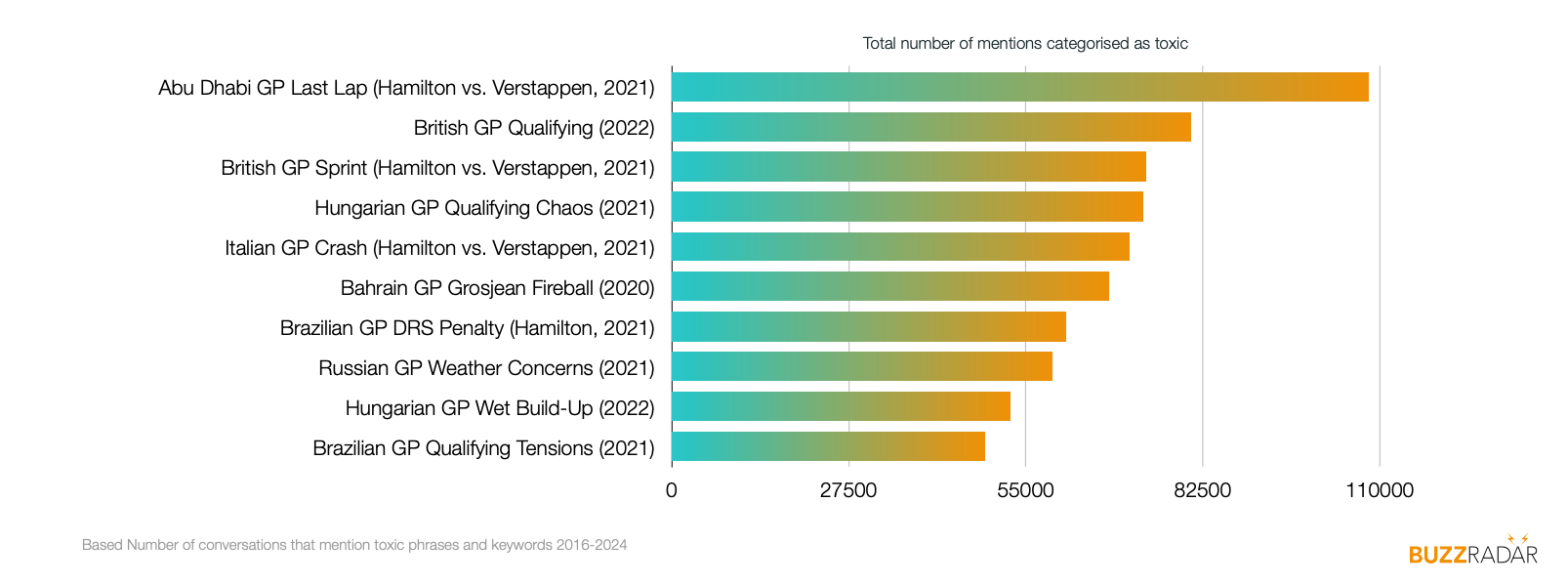
The Race Social Media Team's opinion
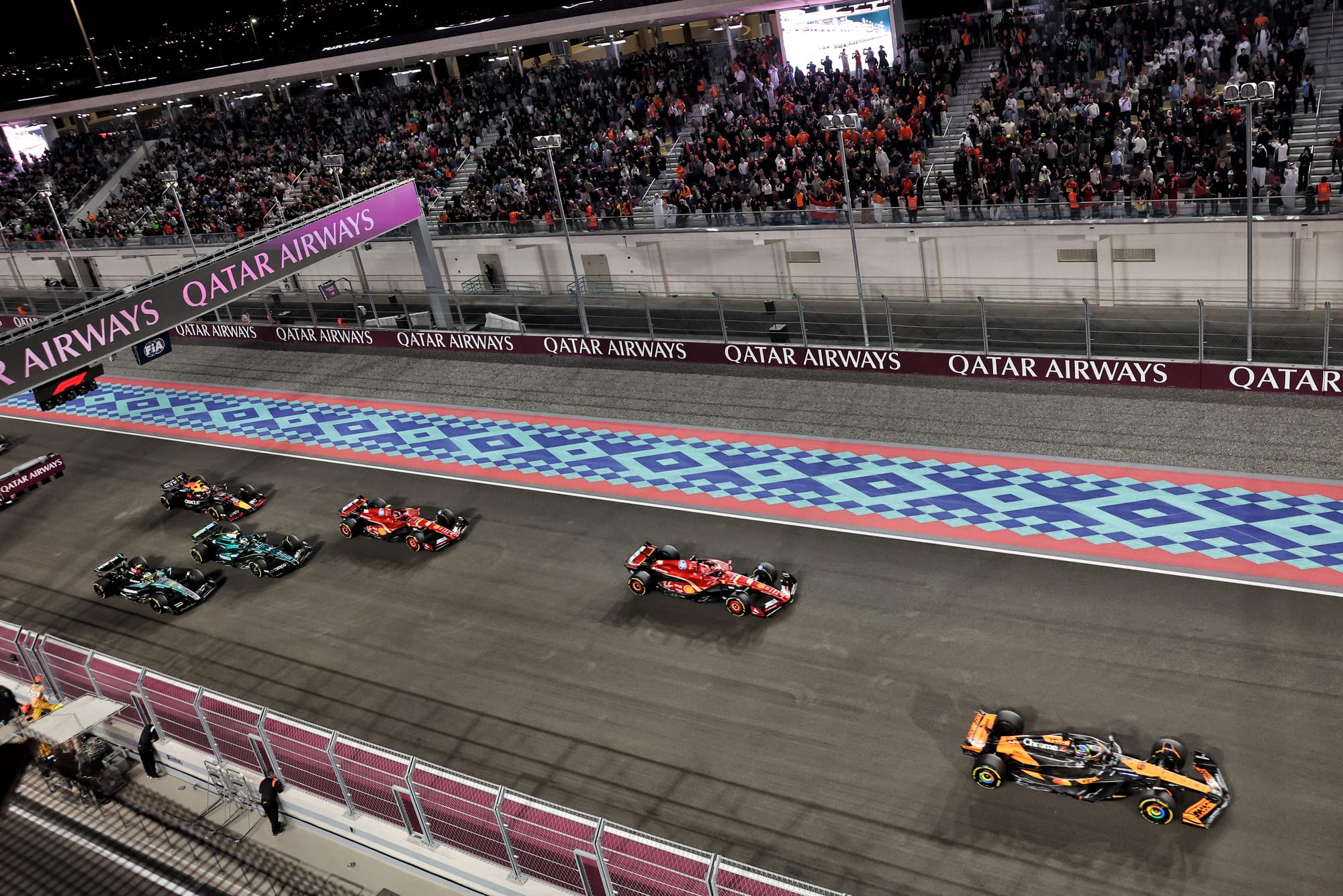
The days of clickbait are slowly fading away and its more negative internet-cousin ‘rage bait’ is on trend. The goal is simple - create content that provokes emotions from social media users, then bask in the thousands of comments, shares and likes which, for many companies or content creators, can turn into profit.
The algorithms on social media platforms reward content that gets more engagement - and, unluckily for those who would rather avoid it, people are more likely to engage with content when angry.
The goal for social media apps and services is to figure out how to keep you on their platform for longer. The more you’re commenting, sharing and viewing adverts, the more money the app generates, which is why it may seem like all you ever see is negativity.
F1 has boomed in popularity over the past few years and when a community grows, even if the percentage of “toxic” fans stays the same, the pool becomes bigger and thanks to the way our social media platforms work, it makes sense that more toxicity has occurred when more eyes than ever have been on it as an entity.
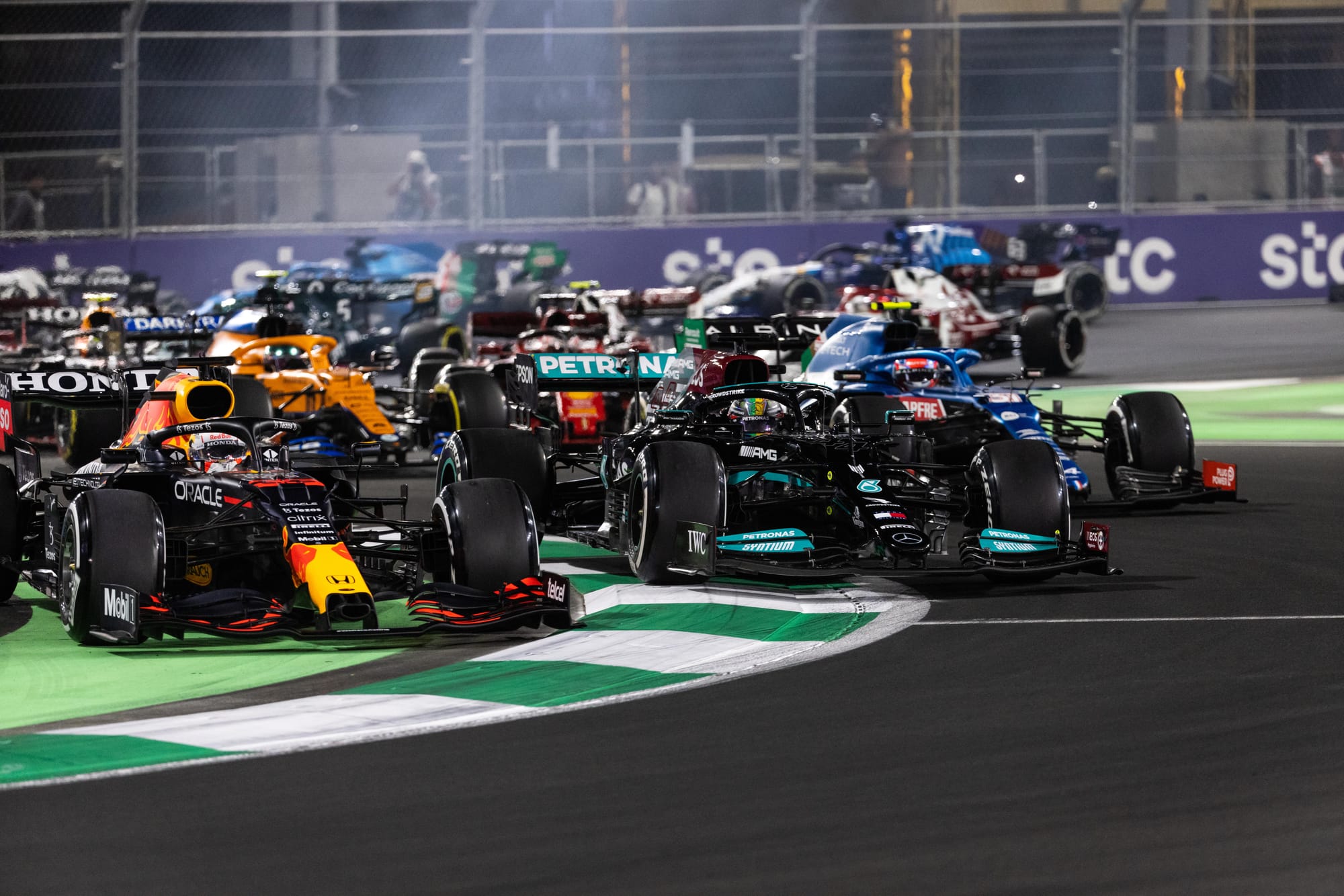
Questionable decisions, controversial results, driver rivalries, all these things happened years ago, and will continue to happen. The difference is that now fans are constantly battling with 20 different forms of media publishing different variations of the same, let's say for example, increasingly out-of-context quote.
Toxicity in the social media space sells. That’s the fundamental truth of it, and all the while posts that create division or spew hatred keep earning huge engagements through the discussions and arguments around them and there’s no incentive for people to stop.
Finding a response
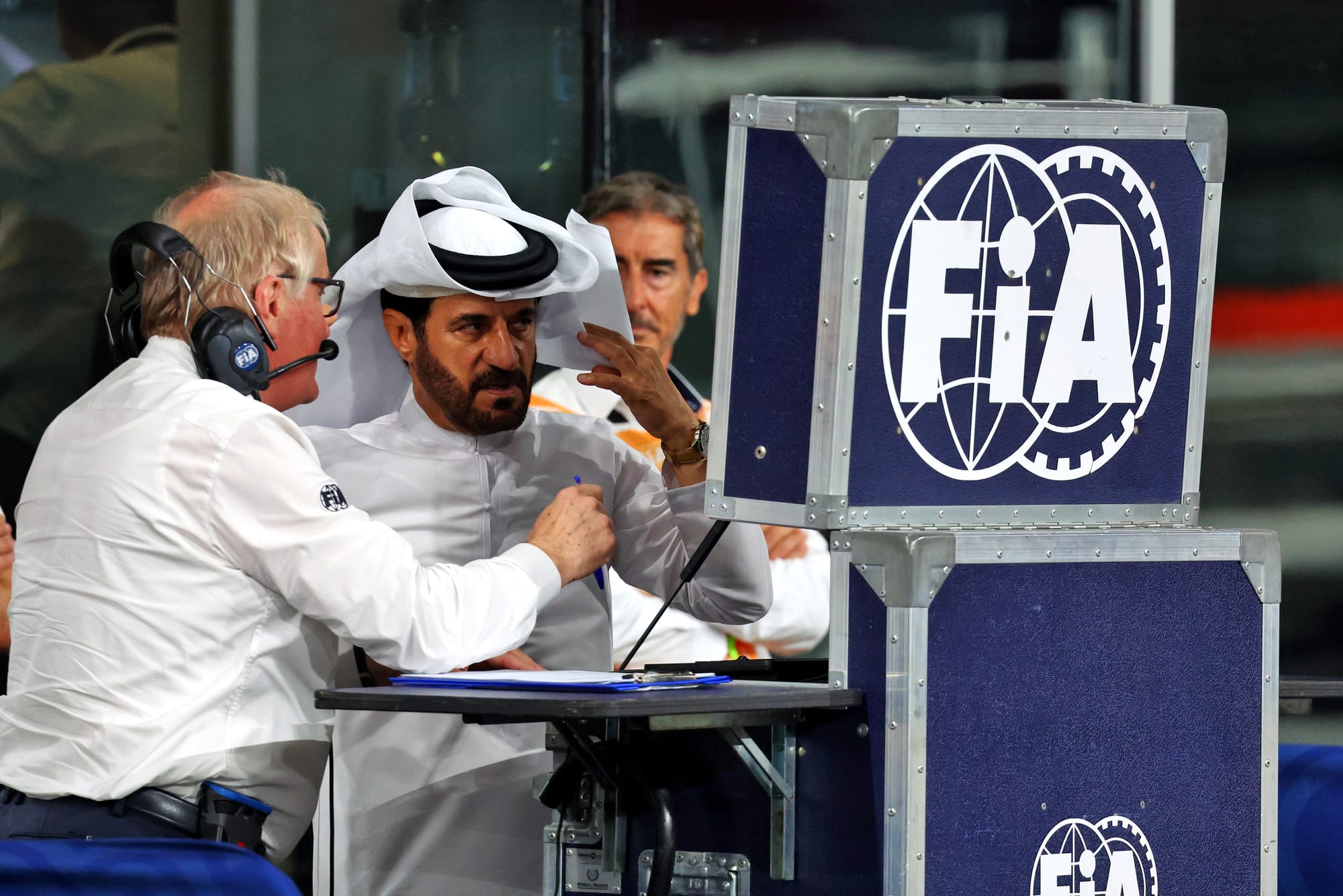
The Buzz Radar report that highlights the growing problem of toxicity comes with FIA president Mohammed Ben Sulayem having been on a personal crusade in dealing with the issue.
At the governing body’s FIA Officials Summit in Madrid last week, Ben Sulayem helped launch a report by its United Against Online Abuse (UAOA) campaign that exposed the scale of the problem.
The UAOA is a collaboration of 28 members including governments, regulatory institutions and sporting bodies such as the FIA, FIM, World Sailing, World Netball, World Rowing, the UCI and the International Tennis Federation, to help tackle online abuse.
Based on feedback from the federations, its recent Online Abuse in Sport Barometer report suggested that 50% of all abuse directed at competitors was misogynistic or racist, with 90% of federations fearing that abuse could force athletes to leave their sport.
But of equal concern was that 75% of sporting federations reported threats had been made against competitors and their families, with 50% saying volunteers and officials were now facing online abuse.
As part of an effort to help deal with the problem, the UAOA has secured European Commission funding of 400,000 Euros in Erasmus+ - which is the European programme for education, training, youth and sport - to help develop a Pan-European framework to combat online abuse.
It also plans to convene international conferences to drive policy and behavioural changes, as well as expand the coalition of federations that are part of it.
Ben Sulayem said last week that this was an area where strong action was needed.
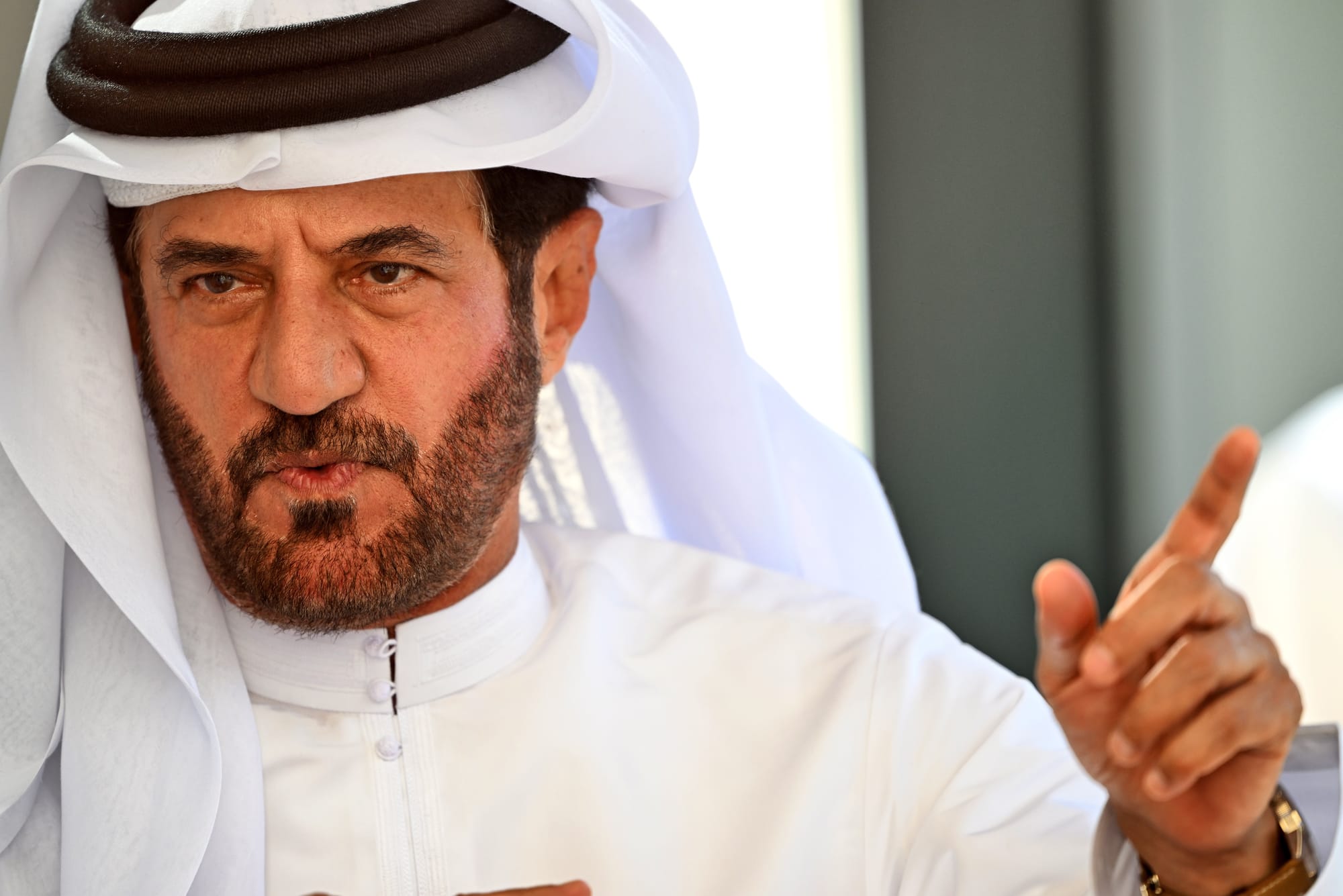
“While it’s encouraging to see more federations adopting anti-abuse measures, these findings show that the scale of abuse is continuing to grow,” he said.
“UAOA’s work in 2025 will be critical in fostering collaboration across the sporting, political, and technology sectors to create meaningful, lasting solutions that protect all members of our community.”
One of the conclusions of the UAOA report is that sporting federations are growing increasingly aware of the need to take action themselves.
However, there has been a jump from 57.1% to 66.7% in those sporting federations “strongly agreeing” that the onus should be on companies like X and Meta to remove harmful content.
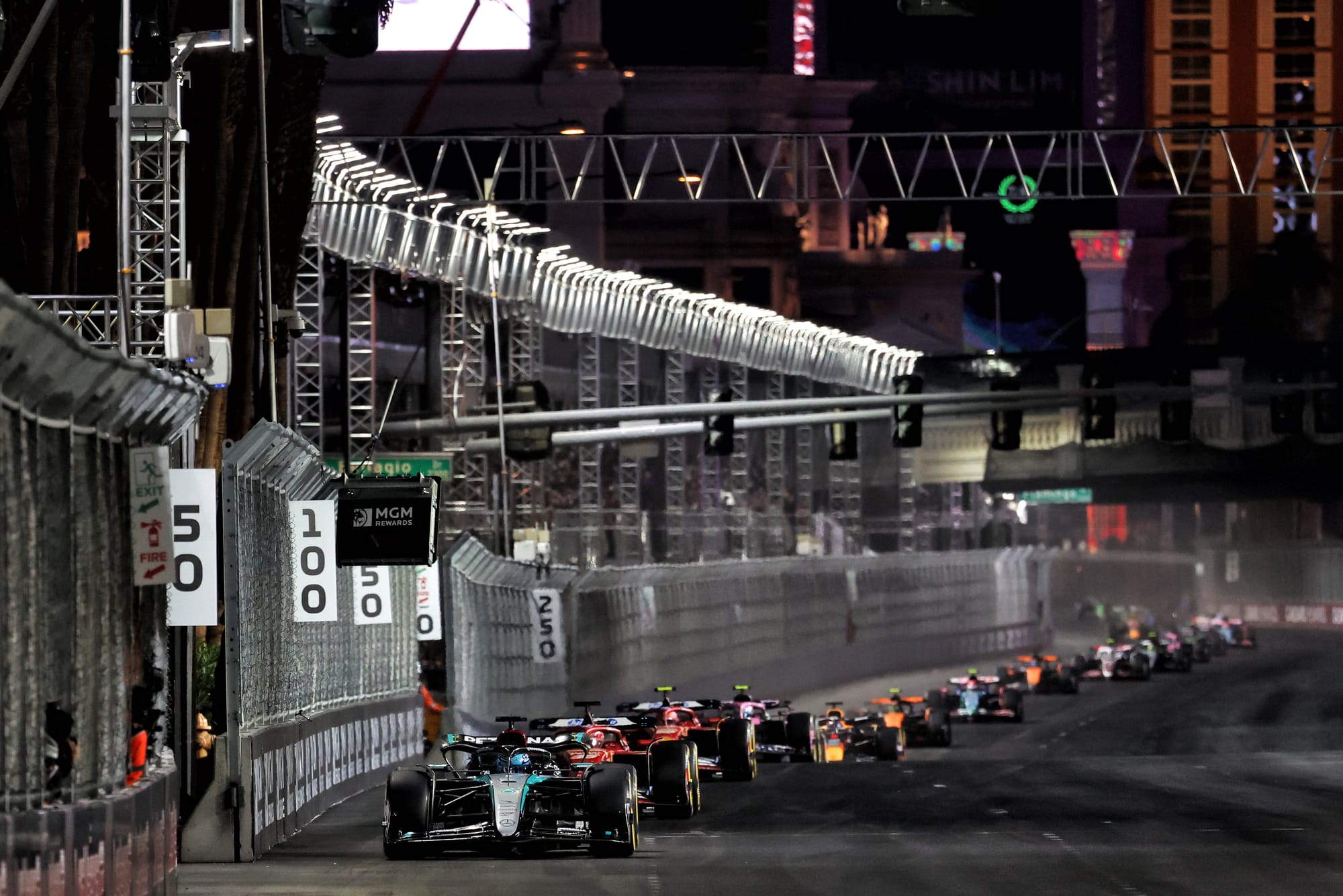
Over 94% of respondents confirmed that the support of social media companies was crucial to the long-term outcome of any campaign for change in this realm.
There are difficulties in addressing the problem, though. As the Buzz Radar report suggests, algorithms will push outrage and negativity higher up people’s timelines – so they get more prominence and engagement than positive or neutral discussions.
This is one of the reasons why negativity is noticed a lot more.
Things have also not been helped by the way X has changed under Elon Musk, and even Facebook has begun to cut back on fact checkers and reduce 'censorship' in a crusade for what it says is free speech.
These are all elements that will need dealing with if toxicity is to be put in check – with Buzz Radar warning that things could get even worse in the short term.
“Using existing social media trends and engagement patterns, our predictive modelling suggests F1 could experience a 10–30% increase in toxic fan interactions over the next 36 months,” it said.
“This evolving landscape presents a real challenge for stakeholders across F1, calling for proactive strategies from teams, drivers, and governing bodies.”
To read the full Buzz Radar report on “Has the F1 Fanbase Become More Toxic” – click here.

